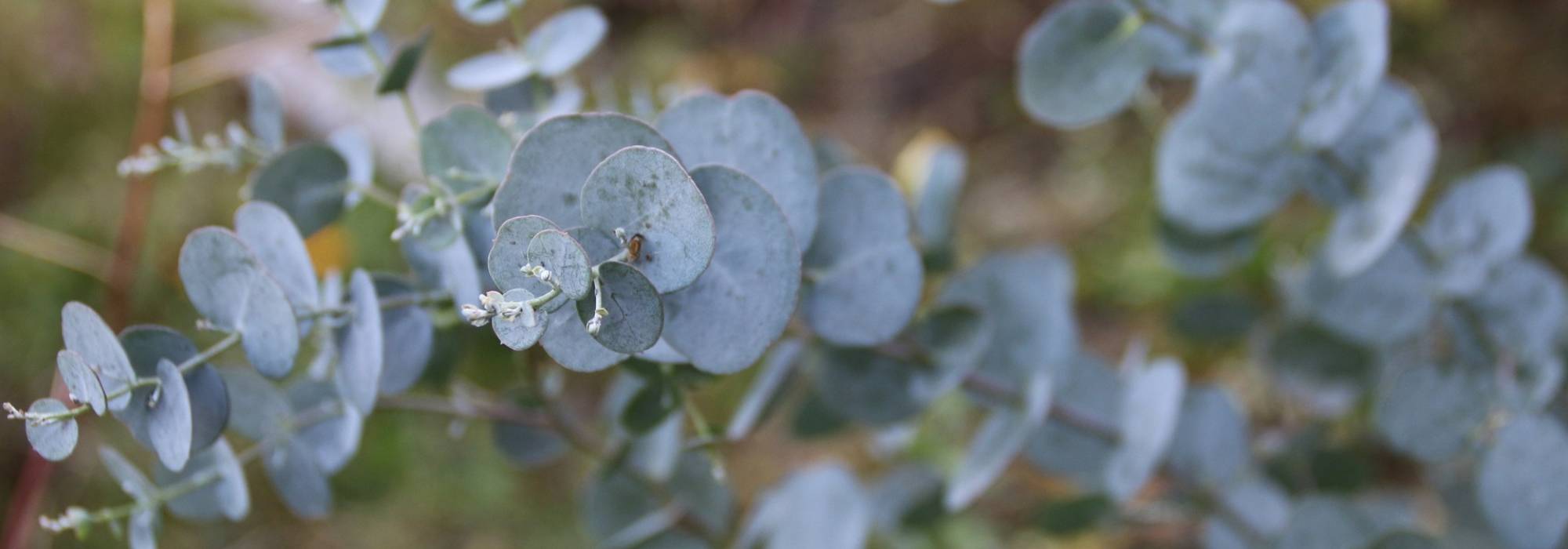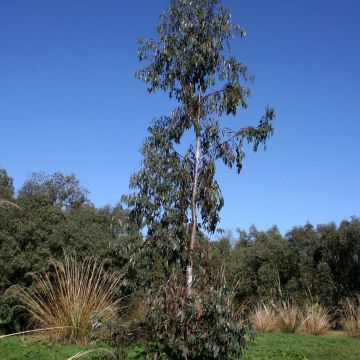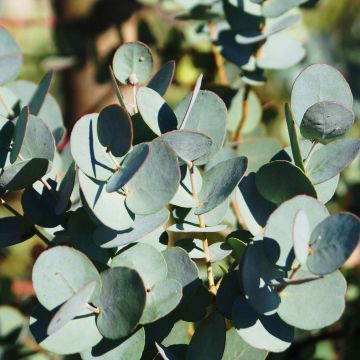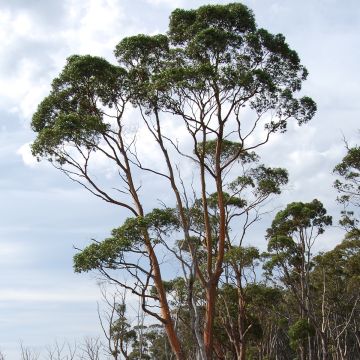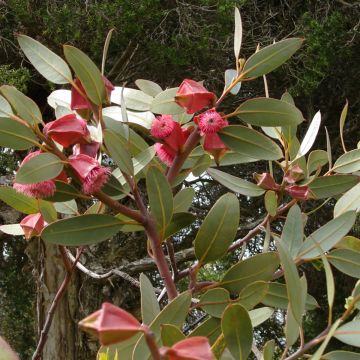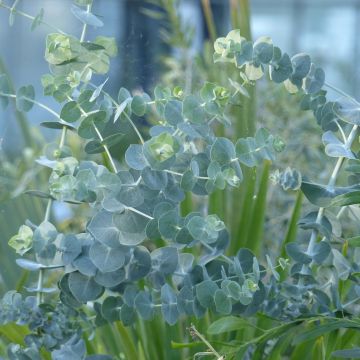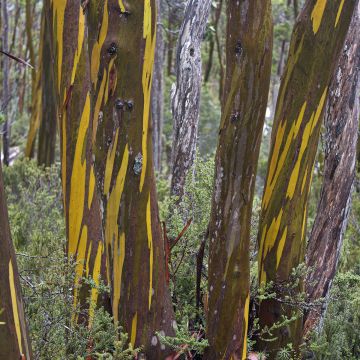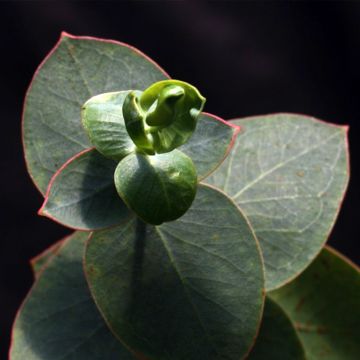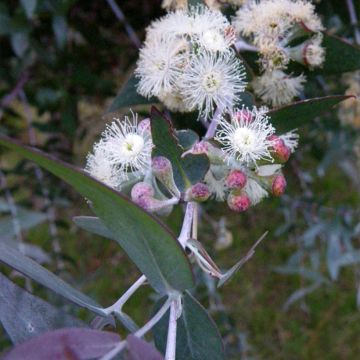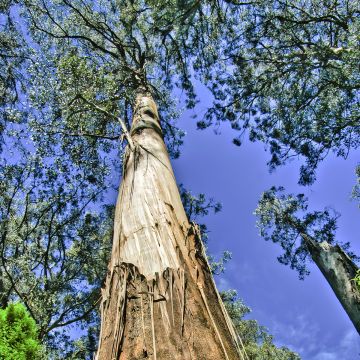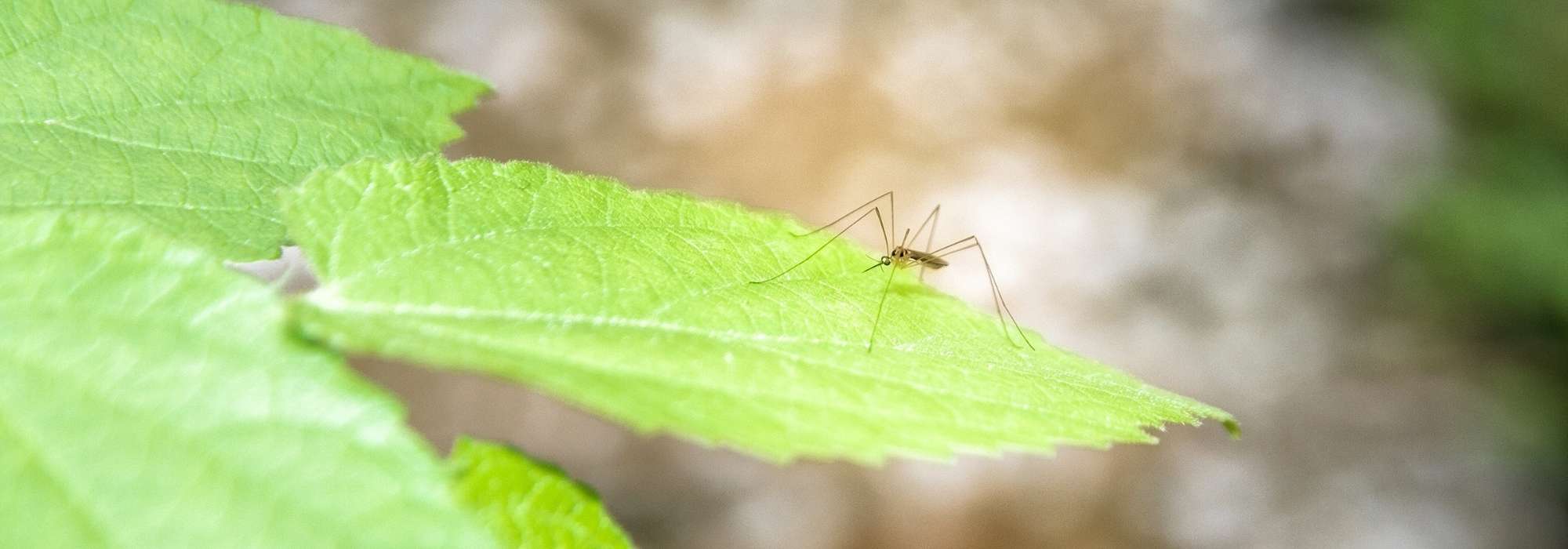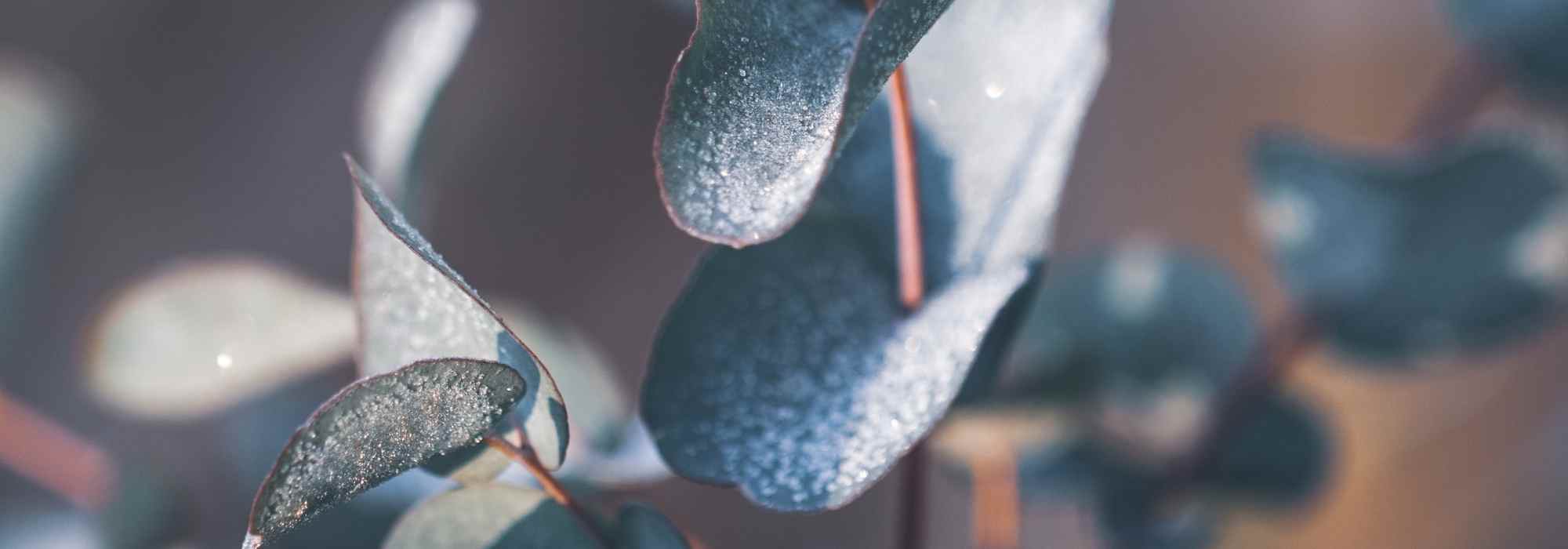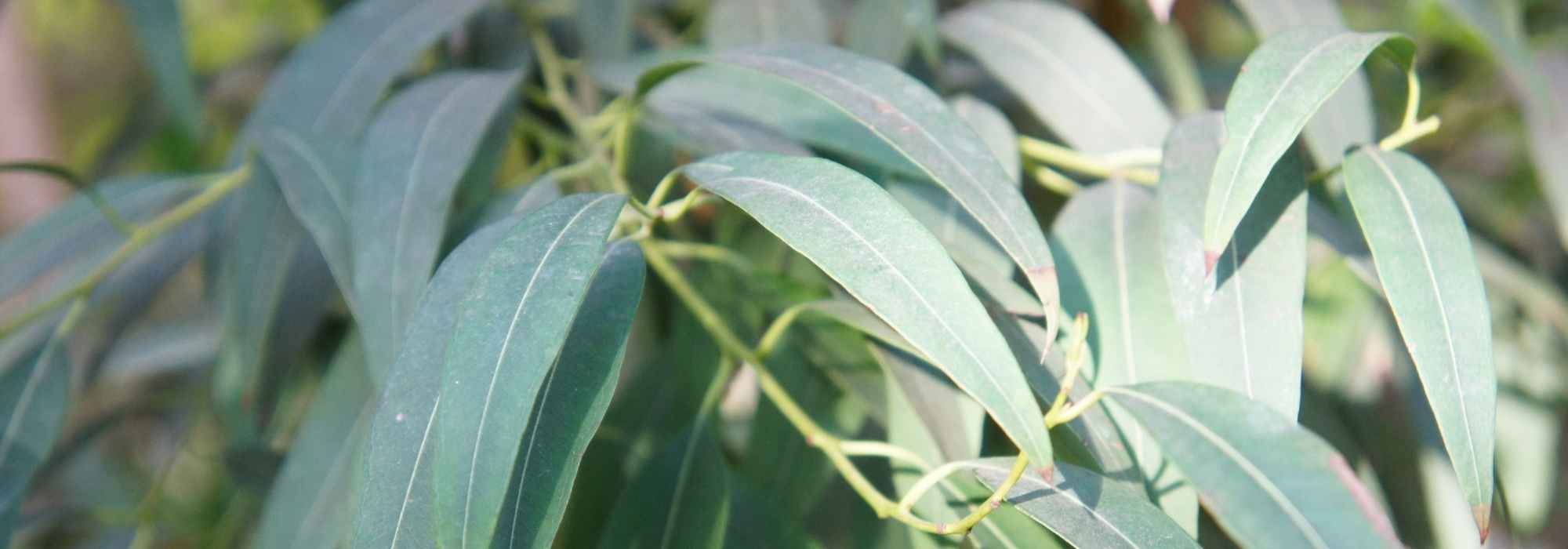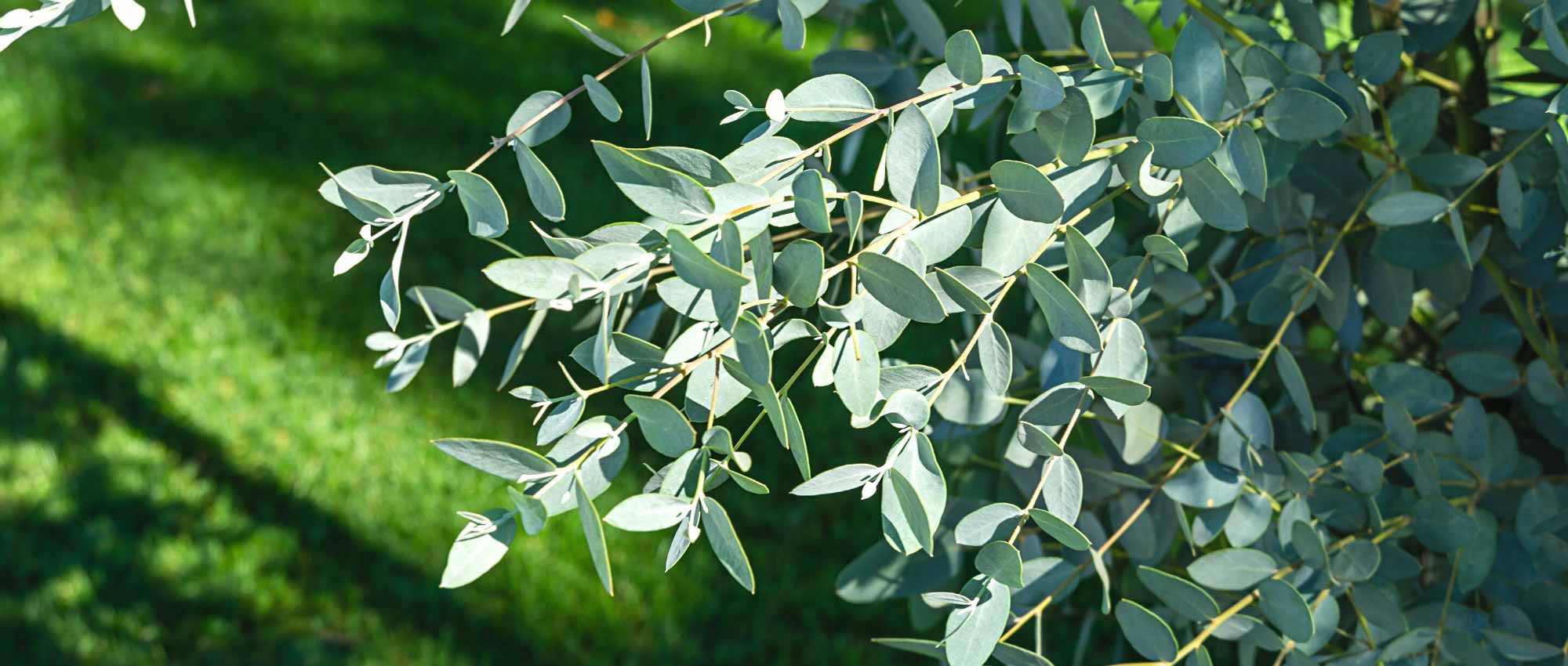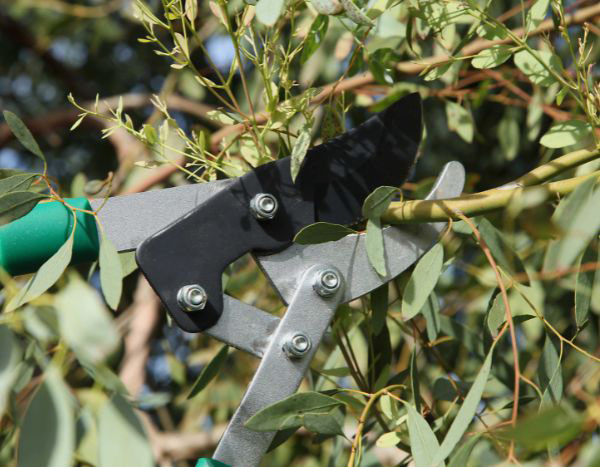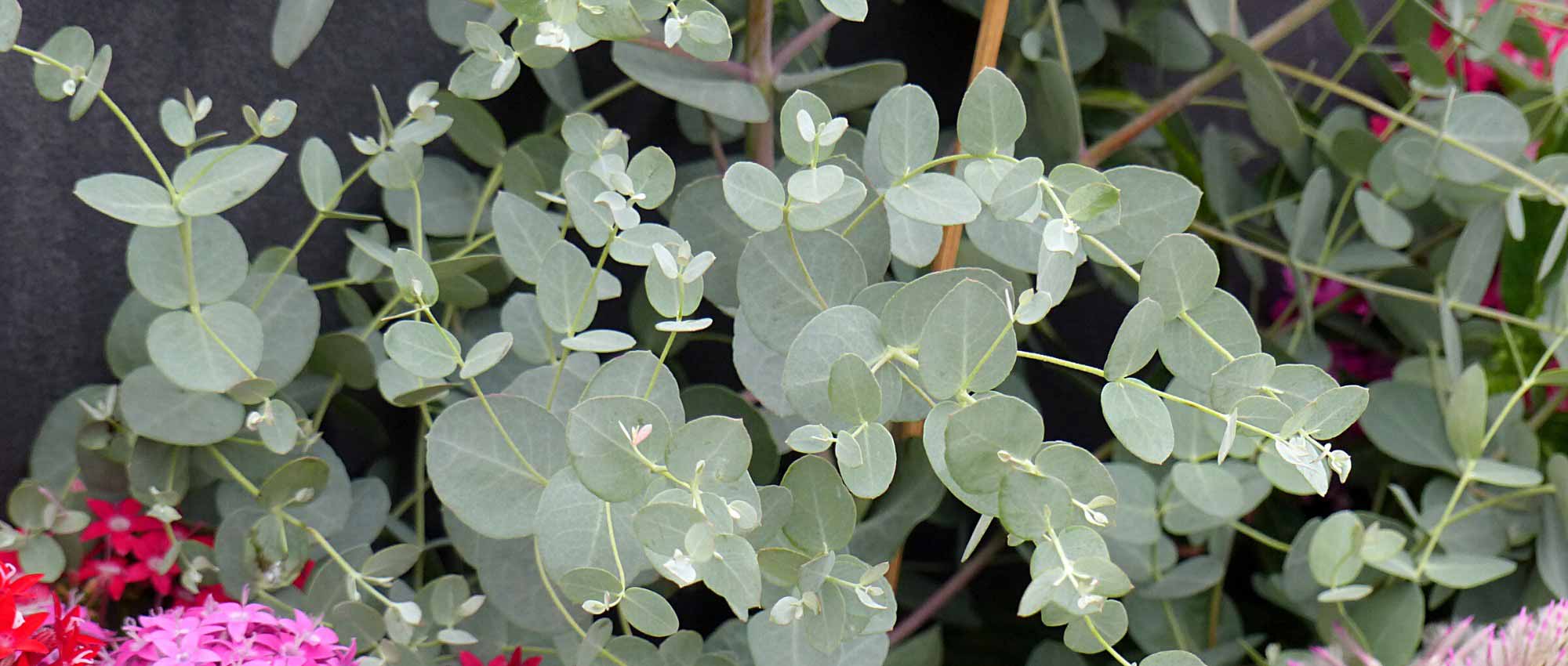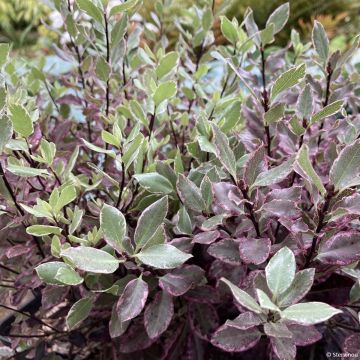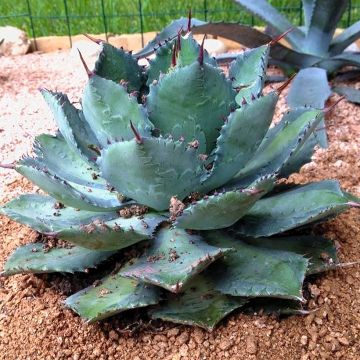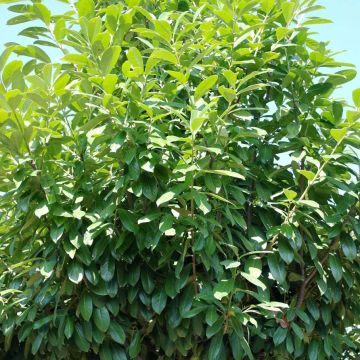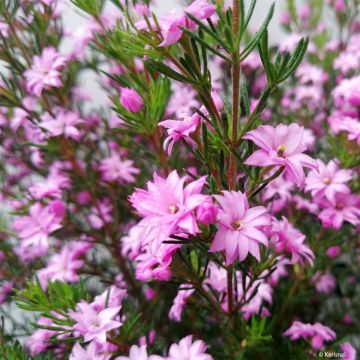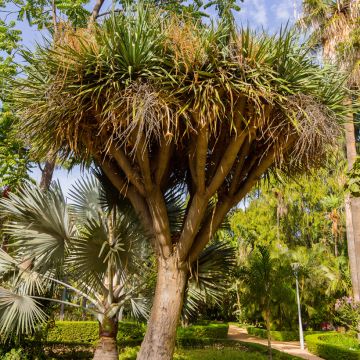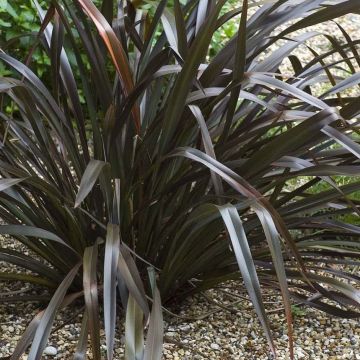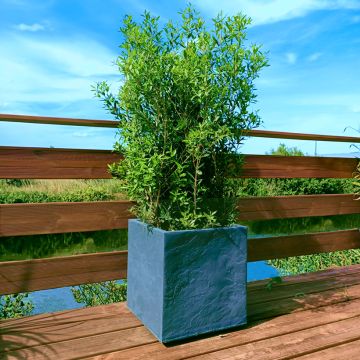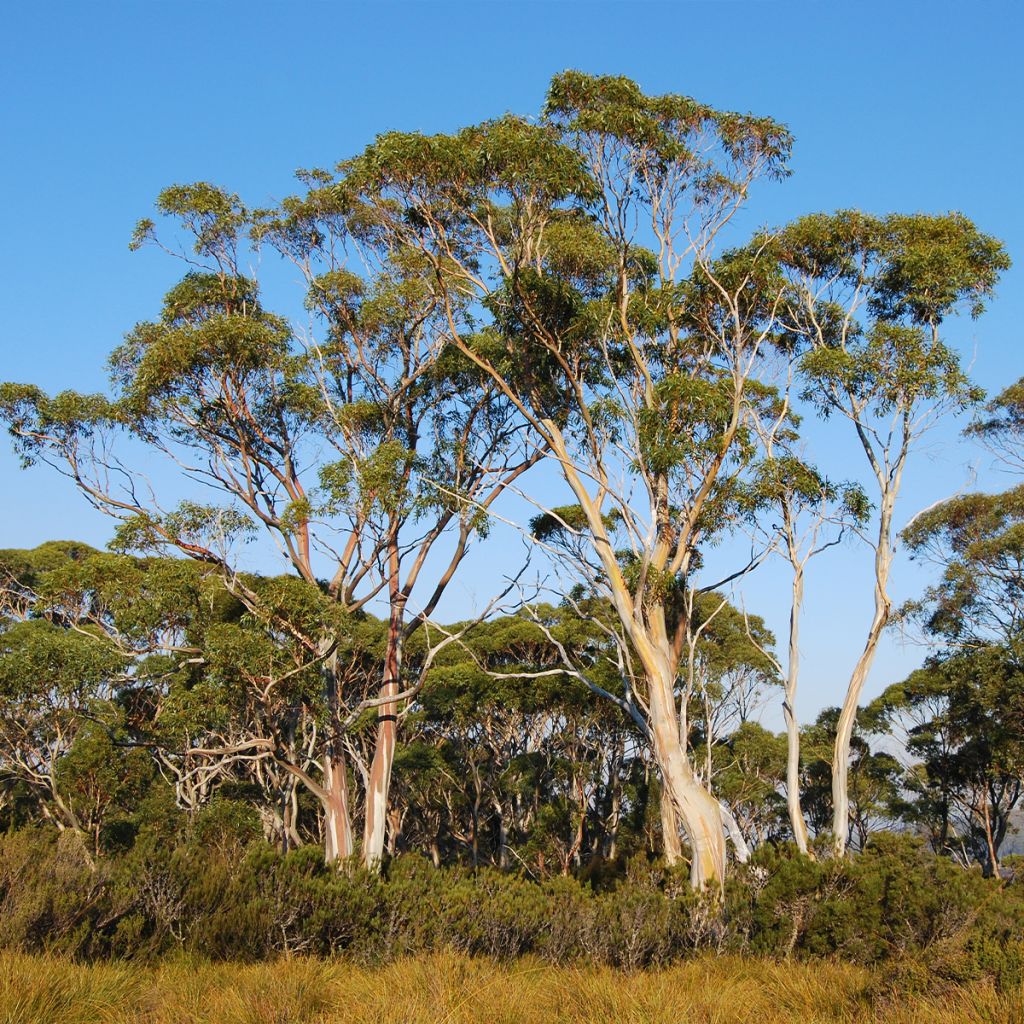

Eucalyptus nitida
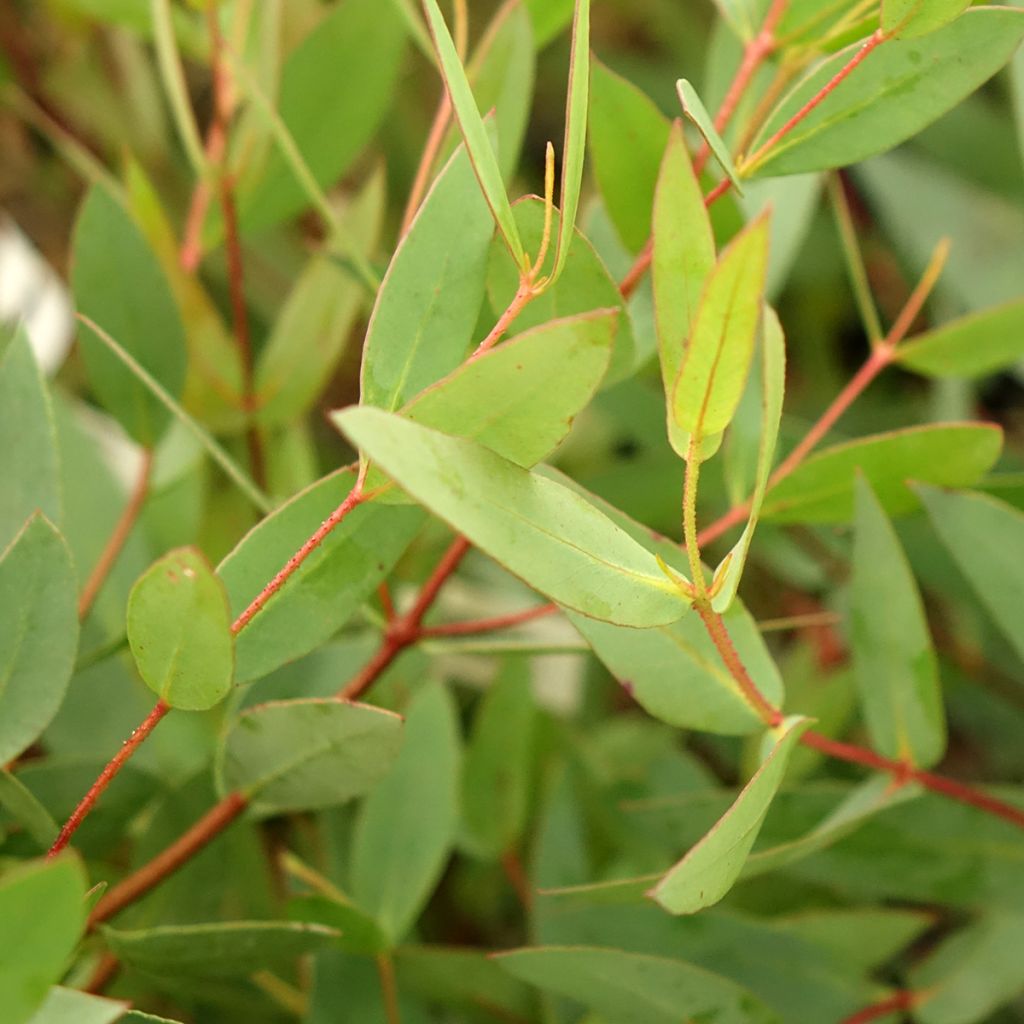

Eucalyptus nitida
Eucalyptus nitida
Eucalyptus nitida
Shining Gum
Ordered in June 2025, I received a very beautiful plant. It's growing and thriving beautifully.
Brigitte, 09/07/2025
Special offer!
Receive a €20 voucher for any order over €90 (excluding delivery costs, credit notes, and plastic-free options)!
1- Add your favorite plants to your cart.
2- Once you have reached €90, confirm your order (you can even choose the delivery date!).
3- As soon as your order is shipped, you will receive an email containing your voucher code, valid for 3 months (90 days).
Your voucher is unique and can only be used once, for any order with a minimum value of €20, excluding delivery costs.
Can be combined with other current offers, non-divisible and non-refundable.
Home or relay delivery (depending on size and destination)
Schedule delivery date,
and select date in basket
This plant carries a 24 months recovery warranty
More information
We guarantee the quality of our plants for a full growing cycle, and will replace at our expense any plant that fails to recover under normal climatic and planting conditions.


Does this plant fit my garden?
Set up your Plantfit profile →
Description
Eucalyptus nitida is a species native to Tasmania, whose aromatic leaves diffuse a pleasant peppermint scent when crushed. Usually forming a medium-sized tree, 15 to 20 m (49 ft 2 in to 65 ft 7 in) high, this plant can also curiously become a bush of only 5 to 6 m (16 ft 5 in to 19 ft 8 in), with a quite different aspect. Decorative with its shiny green foliage, this Eucalyptus also has interesting flowering, in the form of white balls, as well as an ornamental bark. It grows in light soils, even poor, non-limestone and well-drained. A sunny exposure and a not-too-cold climate in winter will suit it well.
The large group of Eucalyptus (about 800 species) is part of the vast botanical family of Myrtaceae. This includes nearly 130 genera, many of which have ornamental value (such as Leptospermum, Chamelaucium, or Callistemon or Metrosideros). Eucalyptus nitida is native to Tasmania, where it grows in the west of the island, in forests from sea level to hills and plateaus. It then forms a tree about twenty metres high, but can peak at 40 m (131 ft 2 in). Interestingly, there are also populations that grow in the form of bushes 5 to 6 m (16 ft 5 in to 19 ft 8 in) high, called mallées, in the sandy coastal dunes. Mallee is an Aboriginal term designating shrubby forms less than 10 m (32 ft 10 in) high, branching from the ground (generally Eucalyptus, Acacia or Melaleuca).
The shrubby form is very compact, with many thin and branching stems starting from the base of the plant, all forming a rather wide rounded dome. The tree form is very erect, with a rather massive trunk that branches in height, giving a crown sometimes dense and conical to rounded, sometimes more airy and spreading. This species has a significant regeneration capacity thanks to its lignotuber. It is an underground swelling rich in starch, capable of emitting many shoots if the aerial part of the plant is destroyed (typically by a fire).
The trunk is covered with a rough light grey bark in the tree forms, while in the bushes, it is smooth, with variable colour: cream, grey to yellow or pink to brown. In all cases, it is decorative and contributes to the ornamental interest of this species.
The juvenile foliage is composed of opposite sessile leaves, lanceolate to elliptical, measuring 4.5 to 8.5 cm (1.8 to 3.3 in) long for 1 to 3 cm (0.4 to 1.2 in) wide, with the upper surface of a beautiful green, while the lower surface is rough and a little lighter. Adult leaves are alternate and petiolate, lanceolate to crescent-shaped and measure up to 13 cm (5.1 in) long and 1.7 cm (0.7 in) wide. They have a beautiful shiny green colour (nitidus means shiny in Latin) and are rich in essential oils, spreading a characteristic peppermint scent when crushed.
The flowering is also worthy of interest, because even if the flowers are small (about 1 cm (0.4 in)), they are grouped by lots of 9 to 15 in umbels. The inflorescences thus formed are globular, forming beautiful white pompoms, the colour of the bouquets of stamens that escape from each bud. The flowering period is from November to March in Tasmania, generally May under our climates.
Eucalyptus nitida grows in non-limestone, neutral to acid, well-drained soil and in sunny exposure. In its native country, there is no dry season, the climate is rainy with mild to hot summers and cool winters. It withstands frost down to about -10°C (14 °F).
A fast-growing species, this Eucalyptus will give an exotic touch to gardens. Its beautiful shiny green foliage will form a superb contrast with the Albizia julibrissin Evey's Pride, with leaves cut like ferns and becoming purple in summer. Its summer flowering in dark pink pompoms further enhances its tropical aspect although its hardiness is better than that of Eucalyptus. To continue in strong contrasts, both in colour and size, bet on Broussonetia papyrifera Golden Shadow, a small tree with large leaves and a lovely golden yellow colour in spring. And in a mild climate, dare Pittosporum tobira, with superb shiny dark green evergreen foliage and deliciously scented white flowering!
Eucalyptus nitida in pictures
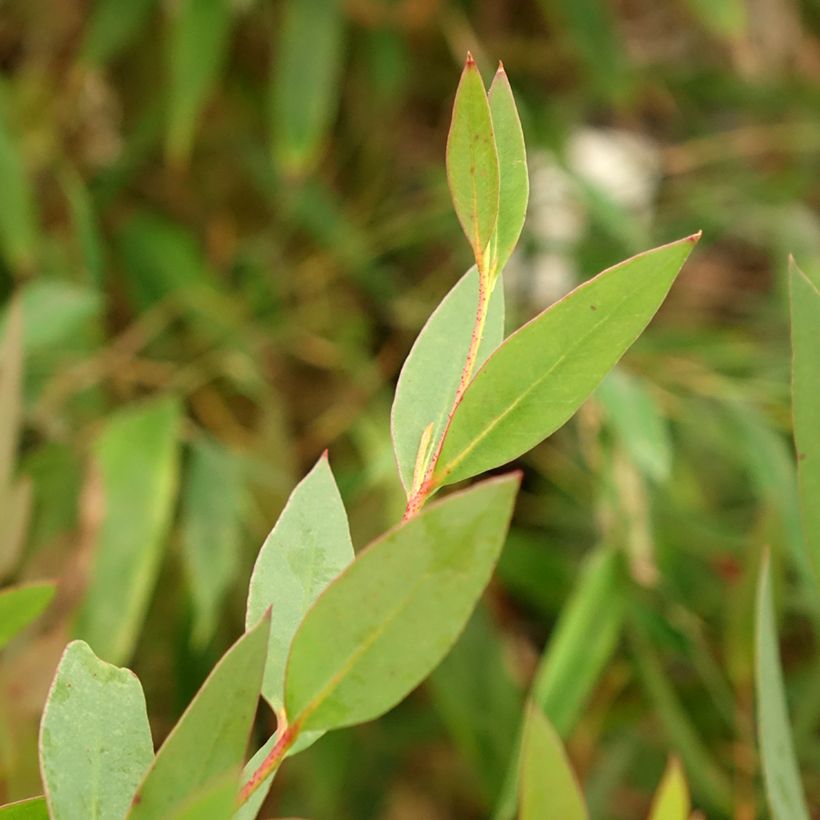

Plant habit
Flowering
Foliage
Botanical data
Eucalyptus
nitida
Myrtaceae
Shining Gum
Australia
Other Eucalyptus
View all →Planting and care
Eucalyptus nitida is best planted at the start of spring in a cold region, at the start of autumn in a dry and hot climate. Plant in well-drained, moist to dry, acidic to neutral (not limestone) soil, in a warm and sunny situation. It is hardy down to -10°C under these conditions.
In regions with mild winters you can plant it in the ground, ensuring good drainage by adding coarse sand, pozzolan or non-limestone gravel. Soak the root ball in a bucket before planting it and then water it well. The growth of this tree is quite fast. Water for the first two years, then occasionally in summer, once well established. Fertiliser is discouraged, it is a species that grows naturally in poor soils. Pruning is not necessary, but possible.
Planting period
Intended location
Care
Planting & care advice
-
, onOrder confirmed
Reply from on Promesse de fleurs
Similar products
Haven't found what you were looking for?
Hardiness is the lowest winter temperature a plant can endure without suffering serious damage or even dying. However, hardiness is affected by location (a sheltered area, such as a patio), protection (winter cover) and soil type (hardiness is improved by well-drained soil).

Photo Sharing Terms & Conditions
In order to encourage gardeners to interact and share their experiences, Promesse de fleurs offers various media enabling content to be uploaded onto its Site - in particular via the ‘Photo sharing’ module.
The User agrees to refrain from:
- Posting any content that is illegal, prejudicial, insulting, racist, inciteful to hatred, revisionist, contrary to public decency, that infringes on privacy or on the privacy rights of third parties, in particular the publicity rights of persons and goods, intellectual property rights, or the right to privacy.
- Submitting content on behalf of a third party;
- Impersonate the identity of a third party and/or publish any personal information about a third party;
In general, the User undertakes to refrain from any unethical behaviour.
All Content (in particular text, comments, files, images, photos, videos, creative works, etc.), which may be subject to property or intellectual property rights, image or other private rights, shall remain the property of the User, subject to the limited rights granted by the terms of the licence granted by Promesse de fleurs as stated below. Users are at liberty to publish or not to publish such Content on the Site, notably via the ‘Photo Sharing’ facility, and accept that this Content shall be made public and freely accessible, notably on the Internet.
Users further acknowledge, undertake to have ,and guarantee that they hold all necessary rights and permissions to publish such material on the Site, in particular with regard to the legislation in force pertaining to any privacy, property, intellectual property, image, or contractual rights, or rights of any other nature. By publishing such Content on the Site, Users acknowledge accepting full liability as publishers of the Content within the meaning of the law, and grant Promesse de fleurs, free of charge, an inclusive, worldwide licence for the said Content for the entire duration of its publication, including all reproduction, representation, up/downloading, displaying, performing, transmission, and storage rights.
Users also grant permission for their name to be linked to the Content and accept that this link may not always be made available.
By engaging in posting material, Users consent to their Content becoming automatically accessible on the Internet, in particular on other sites and/or blogs and/or web pages of the Promesse de fleurs site, including in particular social pages and the Promesse de fleurs catalogue.
Users may secure the removal of entrusted content free of charge by issuing a simple request via our contact form.
The flowering period indicated on our website applies to countries and regions located in USDA zone 8 (France, the United Kingdom, Ireland, the Netherlands, etc.)
It will vary according to where you live:
- In zones 9 to 10 (Italy, Spain, Greece, etc.), flowering will occur about 2 to 4 weeks earlier.
- In zones 6 to 7 (Germany, Poland, Slovenia, and lower mountainous regions), flowering will be delayed by 2 to 3 weeks.
- In zone 5 (Central Europe, Scandinavia), blooming will be delayed by 3 to 5 weeks.
In temperate climates, pruning of spring-flowering shrubs (forsythia, spireas, etc.) should be done just after flowering.
Pruning of summer-flowering shrubs (Indian Lilac, Perovskia, etc.) can be done in winter or spring.
In cold regions as well as with frost-sensitive plants, avoid pruning too early when severe frosts may still occur.
The planting period indicated on our website applies to countries and regions located in USDA zone 8 (France, United Kingdom, Ireland, Netherlands).
It will vary according to where you live:
- In Mediterranean zones (Marseille, Madrid, Milan, etc.), autumn and winter are the best planting periods.
- In continental zones (Strasbourg, Munich, Vienna, etc.), delay planting by 2 to 3 weeks in spring and bring it forward by 2 to 4 weeks in autumn.
- In mountainous regions (the Alps, Pyrenees, Carpathians, etc.), it is best to plant in late spring (May-June) or late summer (August-September).
The harvesting period indicated on our website applies to countries and regions in USDA zone 8 (France, England, Ireland, the Netherlands).
In colder areas (Scandinavia, Poland, Austria...) fruit and vegetable harvests are likely to be delayed by 3-4 weeks.
In warmer areas (Italy, Spain, Greece, etc.), harvesting will probably take place earlier, depending on weather conditions.
The sowing periods indicated on our website apply to countries and regions within USDA Zone 8 (France, UK, Ireland, Netherlands).
In colder areas (Scandinavia, Poland, Austria...), delay any outdoor sowing by 3-4 weeks, or sow under glass.
In warmer climes (Italy, Spain, Greece, etc.), bring outdoor sowing forward by a few weeks.






























